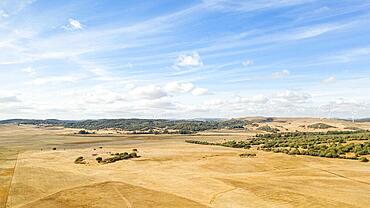Recent searches
Loading...
1174-10246 - Large stack of hay bales in a field by a road
1350-653 - A bush cricket on a Rosmary plant. The atrophied wings of Ephippiger species are unfit to flight and only used for the emission of sounds. This one has some parasitic mites on it
1350-161 - The Sun setting into a pall of forest fire smoke over Alberta from fires in B.C. and elsewhere, on August 17, 2018. This shows the dimming and reddening of the Sun as it set, with it disappearing from view long before it reached the horizon.
1350-665 - This is the most common ladybird in Europe, introduced in many countries as pests control agents as they are voracious predators of aphids
1350-28 - The Carina Nebula (aka Eta Carinae) in the southern sky, shot December 11, 2012 from Timor Cottage, Coonabarabran, NSW, Australia. This is a stack of 5 x 12 minute exposures at ISO 400 with the Canon 5D MkII (filter modified) and Astro-Physics 105mm Traveler apo refractor and 6x7 field flattener.
1350-672 - Damselflies are similar to dragonflies, but are smaller, have slimmer bodies, and most species fold the wings along the body when at rest.
1350-668 - This is the most common ladybird in Europe, introduced in many countries as pests control agents as they are voracious predators of aphids
1350-664 - A long-horned bee covered in pollen; the males of this solitary bee species are easy to identify because of the long antennae
1350-675 - Crab spiders do not build webs to trap prey, though all of them produce silk for drop lines and sundry reproductive purposes; some are wandering hunters and the most widely known are ambush predators.
1350-671 - Most crab spiders are specialiced in ambush hunting in flowers.
1350-670 - As their common name suggests, they are often seen hovering or nectaring at flowers; the adults of many species feed mainly on nectar and pollen, while the larvae (maggots) eat a wide range of foods.
1350-160 - The Sun setting into a pall of forest fire smoke over Alberta from fires in B.C. and elsewhere, on August 17, 2018. This shows the dimming and reddening of the Sun as it set, with it disappearing from view long before it reached the horizon.
1350-667 - This particular species of longhorn beetle can damage cereal crops but not to an extent of being considered a pest
1350-666 - This is the most common ladybird in Europe, introduced in many countries as pests control agents as they are voracious predators of aphids
1350-669 - Psilothrix is a genus of soft-winged flower beetles; they are very shy and will throw themselves to the ground if they feel any danger. The colour of this beautiful insect is brilliant metallic blue-green.
1350-673 - The Tachinidae are a large and variable family of true flies within the insect order Diptera, with more than 8,200 known species and many more to be discovered. Most are protelean parasitoids, or occasionally parasites, of arthropods.
1350-674 - Butterflies are often polymorphic, and many species make use of camouflage, mimicry and aposematism to evade their predators.
1350-123 - NGC 7000, the North America Nebula, with the Pelican Nebula, IC 5067, at right, in Cygnus, taken from home November 21, 2016 as part of testing of the Explore Scientific FCD100 102mm apo refractor. This is a stack of 5 x 6-minute exposures at f/7 with the ES field flattener, and at ISO 1600 with the filter-modified Canon 5D MkII. Star diffraction spikes added with AstronomyTools actions.
1350-16 - Comet Holmes, 17P, taken Nov 1, 2007 on excellent night. Taken with A&M 105mm apo refractor at f/5 with Borg 0.85x compressor/field flattener on SkyWatcher HEQ5 mount. Canon 20Da camera at ISO400. Composite of 4 min, 2min, 1min, 30sec, 15sec, and 7 sec exposures, each exposure being a stack of 3 to 4 identical exposures. Registered and stacked in Photoshop (HDR mode did not produce usable result, so manually composited with sucessively smaller masks to reveal short exposure content around nucleus. Contrast exaggerated with Curves to bring out very faint tail structure. North up, so tail to the S and SW.Nucleus is dot at upper left of inner coma, other star in inner coma at right is a field star
1116-48686 - Aerial view of stacked square hay bales in a cut field with long shadows, Alberta, Canada
1116-47722 - A boy standing in a field with a wagon looking at piles of books, composite image
1116-46188 - Colourful Stacked Bee Hive Boxes In A Field With Clouds Above, North Of Rolling Hills, Alberta, Canada
1174-7094 - Landscape with dry-stone wall dividing fields, row of trees and hills in the distance
1116-45062 - Rugged Cliffs And Sea Stacks Along The Coastline, Duncansby Head, Scotland
1174-6507 - Rear view of camper van parked on a meadow, stacks of mattresses and bedding in back of vehicle, Oxfordshire, England
1174-5657 - Close up of stack of wooden logs on a farm pasture, Oxfordshire, England
1174-4812 - Farmer stacking hay bales on a trailer, Oxfordshire, England
478-4869 - Evening light, Hound Tor, Dartmoor National Park, Devon, England, United Kingdom, Europe
799-3467 - Bowerman's Nose granite pillar on Hayne Down in autumn, Dartmoor, Devon, England, United Kingdom, Europe
1171-256 - Wood piles near Schoenenbourg, Bas-Rhin, France, Europe
1171-260 - Panorama of Schoenenbourg area, Bas-Rhin, France, Europe
799-2770 - Corn stooks harvested for thatching purposes, Devon, England, United Kingdom, Europe
832-375847 - Kraftwerk Neurath power plant with a huge cloud of steam, Grevenbroich, North Rhine-Westphalia, Germany, Europe
832-342005 - Football field in front of Klingenberg Power Station, Berlin-Lichtenberg, Berlin, Germany, Europe
847-334 - Hay bales stacked high in West Yorkshire, Yorkshire, England, United Kingdom, Europe
832-145256 - Ruhr Oel GmbH refinery and A2 motorway, Horst district, Gelsenkirchen, North Rhine-Westphalia, Germany, Europe
1116-21059 - Model Combine on a Pile of Feed Corn, near Niverville, Manitoba
857-50853 - Farm machinery stacks and loads organic hay in Northern California.
799-324 - Melting snow on Belstone Tor, Dartmoor National Park, Devon, England, United Kingdom, Europe
752-1547 - Stacks of straw on a cultivated field, Imari, Saga Prefecture, Japan
You reached the end of search results
















































